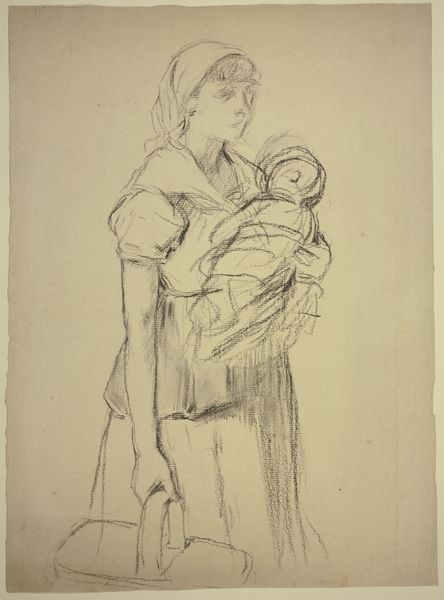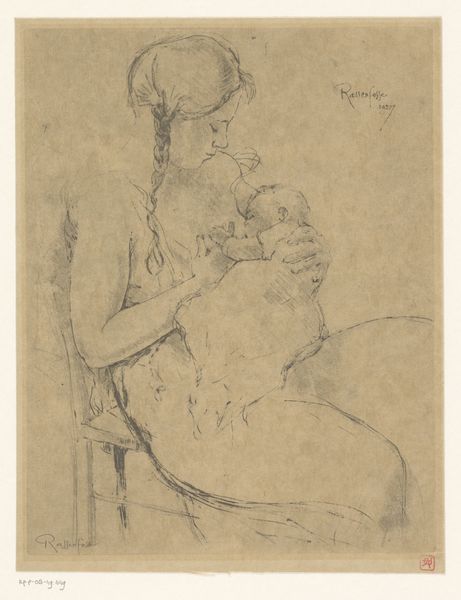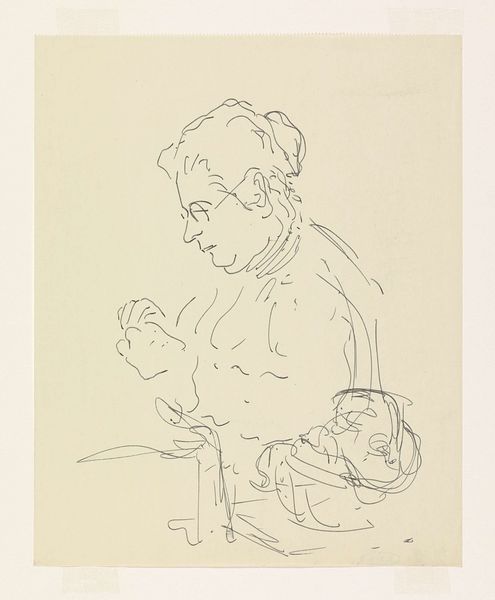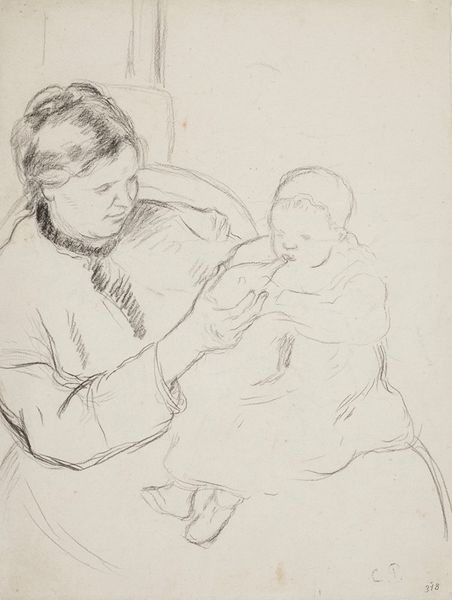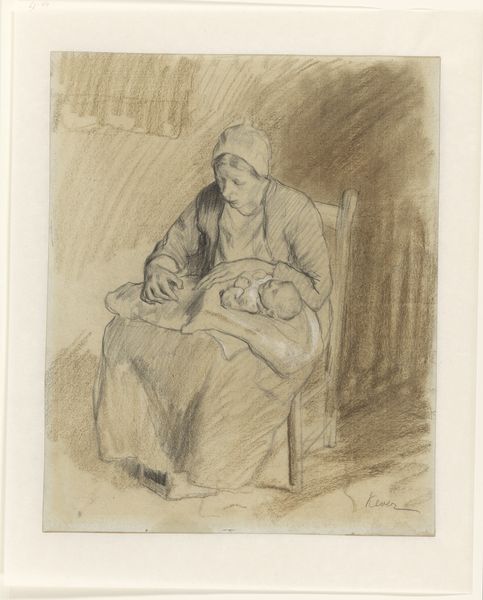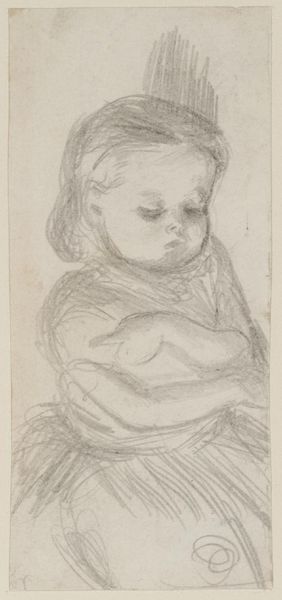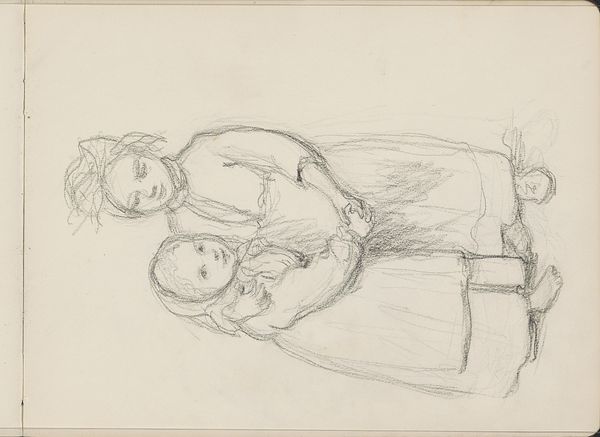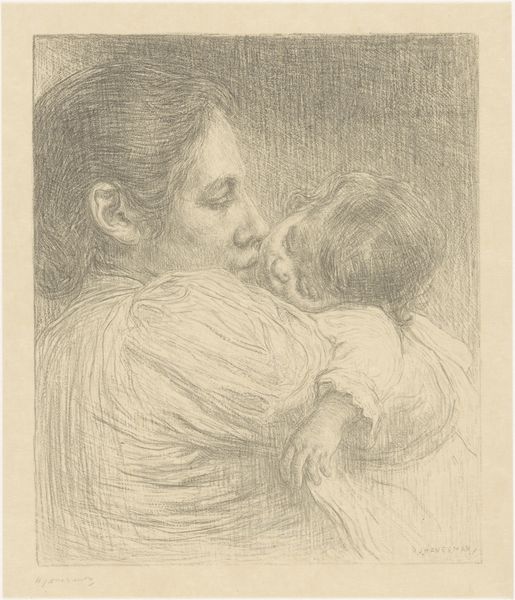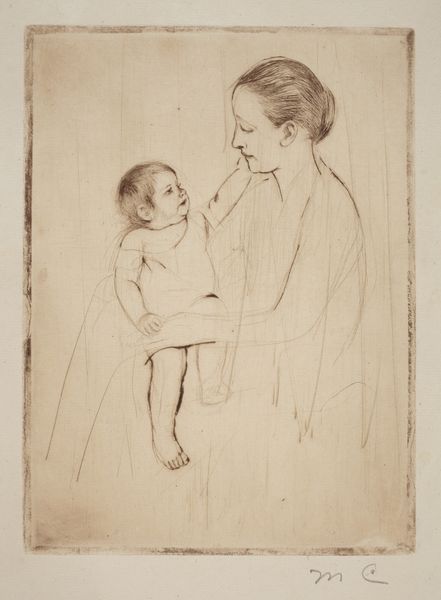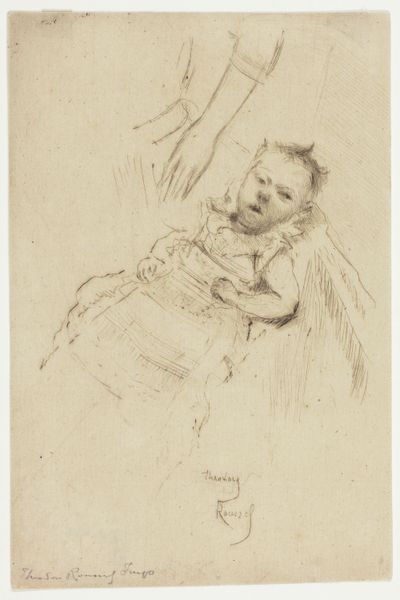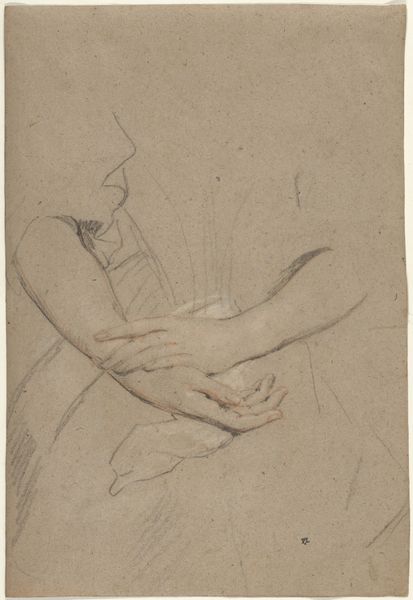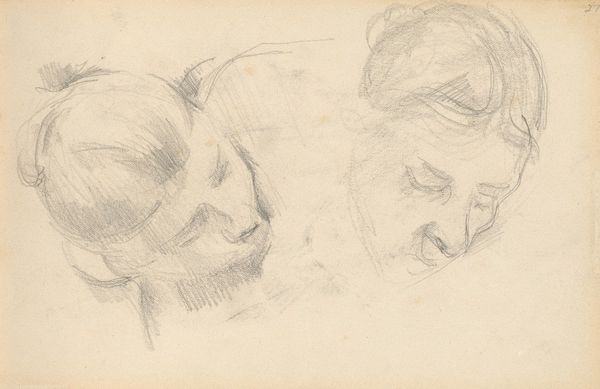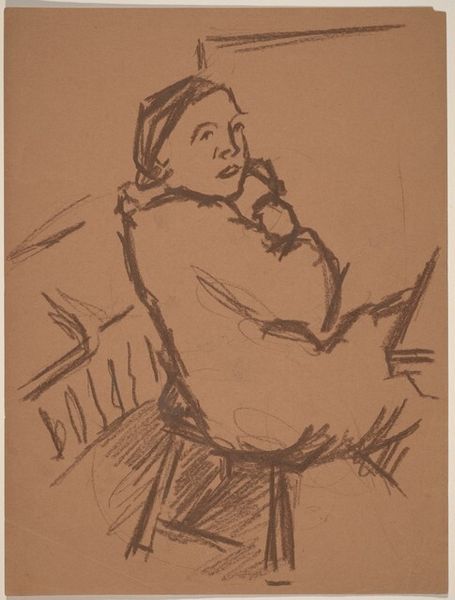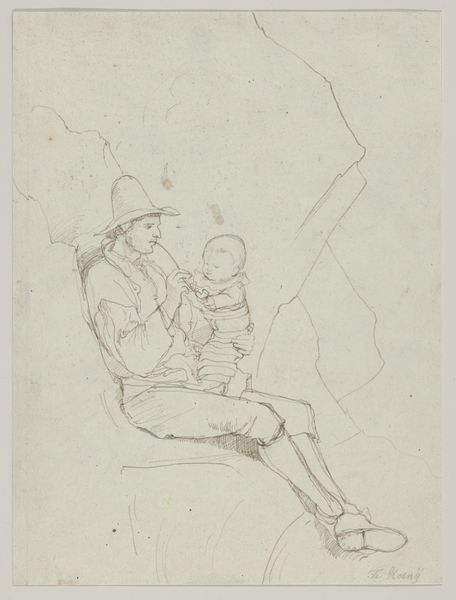
Kind van Wilhelmus Johannes Steenhoff aan de borst van zijn moeder 1873 - 1932
0:00
0:00
wilhelmusjohannessteenhoff
Rijksmuseum
drawing, pencil
#
portrait
#
drawing
#
toned paper
#
light pencil work
#
pencil sketch
#
figuration
#
personal sketchbook
#
ink drawing experimentation
#
pen-ink sketch
#
pencil
#
sketchbook drawing
#
portrait drawing
#
pencil work
#
sketchbook art
Dimensions: height 263 mm, width 353 mm
Copyright: Rijks Museum: Open Domain
Curator: Here we have a pencil drawing from between 1873 and 1932, titled "Kind van Wilhelmus Johannes Steenhoff aan de borst van zijn moeder," which translates to "Child of Wilhelmus Johannes Steenhoff at his Mother's Breast." It's currently housed at the Rijksmuseum. Editor: It has this incredibly tender and almost fragile feel, doesn’t it? The delicate lines really capture the intimacy of the moment. Curator: Indeed. Note the composition – the mother and child are positioned centrally, almost filling the picture plane. This compositional choice immediately draws our eye and directs our focus entirely on their shared space. Also, observe the economy of the line, the sheer art of suggestion rather than concrete description. It has a symbolic and emotional depth that moves beyond a representational likeness. Editor: And you really sense the hand of the artist, don't you? It’s clearly a sketch, a work in progress, evidenced by the toned paper showing through. You can almost trace the artist’s movements, his process of building up the image. Look at how the softness of the pencil creates a gentle atmosphere, perfectly mirroring the bond it depicts. How was the work likely circulated, how many studies preceded it and by what labor was this family supported? Curator: The drawing operates on a deeply psychological level, don't you agree? It evokes thoughts of motherhood and vulnerability using minimal means and the image itself is so universally recognizable, like an archetypal scene that transcends its specific context. Editor: Precisely. I appreciate the rough and unfinished texture—it is more a record of its production than it is anything else, showing the artist grappling with the reality of maternal connection and the very labour required for that connection, turning the paper into something tender but fundamentally made by physical efforts and time. Curator: Thinking about Steenhoff’s other work, you begin to see how his formalism is actually rather modern. It’s a beautiful, economical distillation of pure emotion into line and form. Editor: Yes, it offers such a stark contrast between subject matter and the raw evidence of its handmade origins, and it compels us to remember it’s the means and process of material artistic endeavor we must attend to. Thank you.
Comments
No comments
Be the first to comment and join the conversation on the ultimate creative platform.
